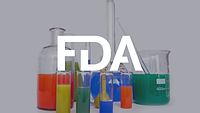National Food Safety Strategy Would Help Reduce Foodborne Illness in U.S., GAO Suggests

Image credit: Allexxandar via Freepik
A recent report published by the U.S. Government Accountability Office (GAO) highlighted the complex regulatory structure and fragmented governance of U.S. food safety and quality. The report concluded that a national food safety strategy could help ensure agencies are working together in an effective and efficient manner to reduce foodborne illness.
According to the U.S. Centers for Disease Control and Prevention (CDC), over 9,000 foodborne illness outbreaks were reported between 2011 and 2022 across the country. It is estimated that 10 million cases of foodborne illnesses each year in the U.S. are caused by six pathogens—Salmonella, Listeria monocytogenes, Campylobacter, Clostridium perfringens, Shiga toxin-producing Escherichia coli (STEC), and norovirus—resulting in approximately 53,300 hospitalizations and more than 900 deaths annually.
The GAO report states that at least 30 federal laws administered by 15 federal agencies govern the safety and quality of the U.S. food supply. The federal food safety oversight system is supplemented by states, localities, tribes, and territories, which may have their own laws and agencies to address the safety and quality of food. GAO has considered federal food safety oversight to be a high-risk issue since 2007, and has been recommending the development of a national food safety strategy since 2017, toward which no progress has been made. GAO believes that the fragmented nature of the federal food safety regulatory system causes inconsistent oversight, ineffective coordination, and inefficient use of resources.
Although federal agencies have made some efforts to meet goals related to foodborne illness reduction, the success of these initiatives has been limited, GAO found. Specifically, CDC has goals and measures aimed at improving its capacity to further identify foodborne pathogens through laboratory testing. At the same time, the U.S. Food and Drug Administration (FDA) and the U.S. Department of Agriculture’s Food Safety and Inspection Service (USDA-FSIS) have goals and measures aimed at reducing infections caused by specific pathogens in regulated foods; the most recent progress reports show that, overall, annual FDA and USDA-FSIS targets have not been met.
Notably, USDA-FSIS has missed its goal to reduce salmonellosis cases attributable to poultry by a wide margin. According to the most recent progress report, although the agency aimed to reduce the proportion of poultry samples with Salmonella serotypes commonly associated with human illness by 4 percent, the proportion of such samples have increased by 22 percent.
Moreover, the Healthy People 2030 initiative sets joint-agency performance metrics to reduce foodborne illness through a working group that includes CDC, FDA, and FSIS officials. However, the working group has reported limited progress. For example, despite being five years into the 10-year initiative, six metrics aimed at reducing foodborne illness outbreaks are still under development and do not have defined baseline data to measure progress.
In light of federal agencies’ limited progress in reducing foodborne illnesses and the issues caused by fragmented and complex regulatory oversight of the U.S. food supply, GAO emphasizes the need for a national food safety strategy. Such a strategy could establish sustained high-level leadership across food safety agencies over time, identify resource requirements across agencies to achieve crosscutting goals, and monitor progress in meeting these goals, among other things.
As of January 2025, there were no plans to create a national food safety strategy, according to officials from the U.S. Office of Management and Budget.
The present GAO report follows two other reports published by GAO in January 2025 that point to issues existing in federal food regulatory agencies. For example, GAO found that FDA has not met its food inspection targets since 2018.
In another report, GAO highlighted USDA-FSIS’ stalled progress toward proposed standards for Salmonella and Campylobacter in various foods.
Looking for a reprint of this article?
From high-res PDFs to custom plaques, order your copy today!






